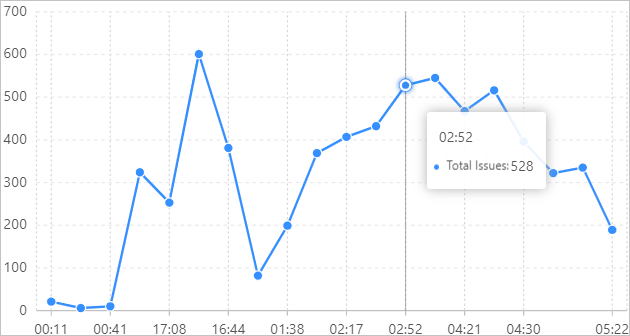Simple Log Service provides security check functions based on the globally shared asset library of WhiteHat Security. You can use security check functions to check whether an IP address, a domain name, or a URL in a log is secure. This topic describes the syntax of security check functions. This topic also provides examples on how to use security check functions.
Scenarios
You can use security check functions in the following scenarios:
Enterprises and institutions in industries, such as Internet, gaming, and consulting, require robust O&M services. The enterprises and institutions can use security check functions to identify suspicious requests or attacks, perform in-depth analysis, and defend against potential attacks.
Enterprises and institutions in industries, such as banking, securities, and e-commerce, require strong protection for internal assets. The enterprises and institutions can use security check functions to identify access to suspicious websites and identify download of trojans. This way, the enterprises and institutions can prevent security risks at the earliest opportunity.
Features
Security check functions provide the following features:
Reliability: Security check functions are based on the globally shared asset library of WhiteHat Security. When WhiteHat Security is updated, the security check functions are also updated.
Efficiency: Security check functions can check millions of IP addresses, domain names, and URLs within seconds.
Ease of use: You can use the security_check_ip, security_check_domain, and security_check_url functions to analyze network logs.
Flexibility: You can perform interactive queries, visualize query and analysis results, and configure alerts.
Functions
The following table describes the security check functions that are supported by Simple Log Service.
Function | Syntax | Description |
security_check_ip(x) | Checks whether an IP address is secure. | |
security_check_domain(x) | Checks whether a domain name is secure. | |
security_check_url(x) | Checks whether a URL is secure. |
security_check_ip function
The security_check_ip function is used to check whether an IP address is secure.
Syntax
security_check_ip(x)Parameters
Parameter | Description |
x | The value of this parameter is an IP address. |
Return value type
The bigint type. Valid values:
1: The specified IP address is suspicious.
0: The specified IP address is secure.
Examples
Query suspicious clients that access a website based on the client_ip field.
Query statement
* | SELECT client_ip, ip_to_country(client_ip,'en') AS country, ip_to_provider(client_ip) AS provider, count(1) AS PV WHERE security_check_ip(client_ip) = 1 GROUP BY client_ip ORDER BY PV DESCQuery and analysis result

security_check_domain function
The security_check_domain function is used to check whether a domain name is secure.
Syntax
security_check_domain(x)Parameters
Parameter | Description |
x | The value of this parameter is a domain name. |
Return value type
The bigint type. Valid values:
1: The specified domain name is suspicious.
0: The specified domain name is secure.
Examples
Calculate the number of times that a website is accessed by suspicious domain names per minute. The query and analysis result is displayed in a line chart.
Query statement
status : * | SELECT count_if( security_check_domain (http_referer) != 0 ) AS "Total Issues", time_series(__time__, '1m', '%H:%i:%s', '0') AS time GROUP BY timeQuery and analysis result

security_check_url function
The security_check_url function is used to check whether a URL is secure.
Syntax
security_check_url(x)Parameters
Parameter | Description |
x | The value of this parameter is a URL. |
Return value type
The bigint type. Valid values:
1: The specified URL is suspicious.
0: The specified URL is secure.
Examples
Calculate the number of times that a website is accessed by secure URLs per minute. The query and analysis result is displayed in a line chart.
Query statement
status : * | SELECT count_if( security_check_url (request_uri) = 0 ) AS "Total Issues", time_series(__time__, '1m', '%H:%i', '0') as time GROUP BY time LIMIT 20Query and analysis result
